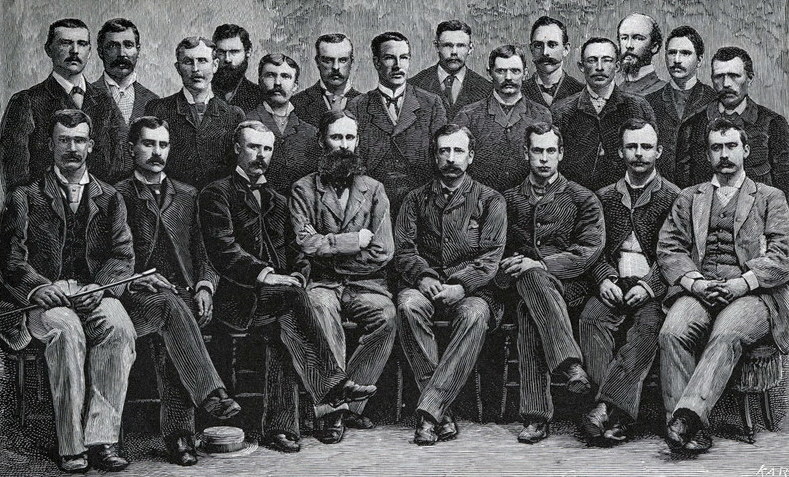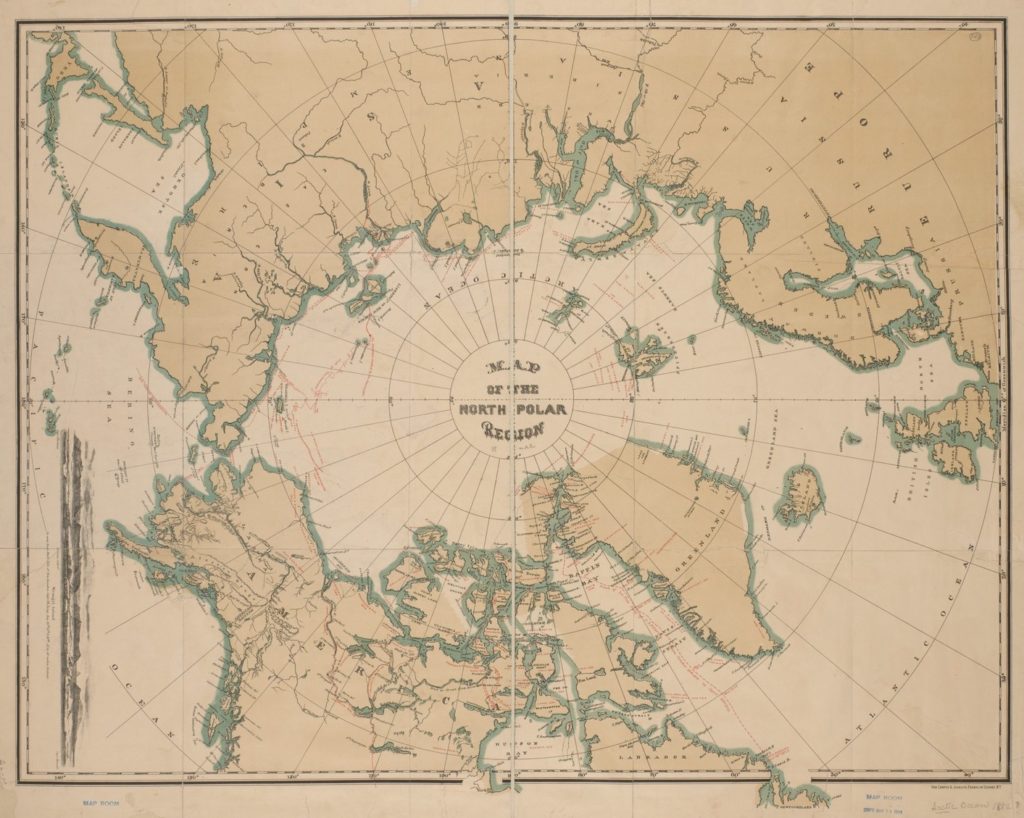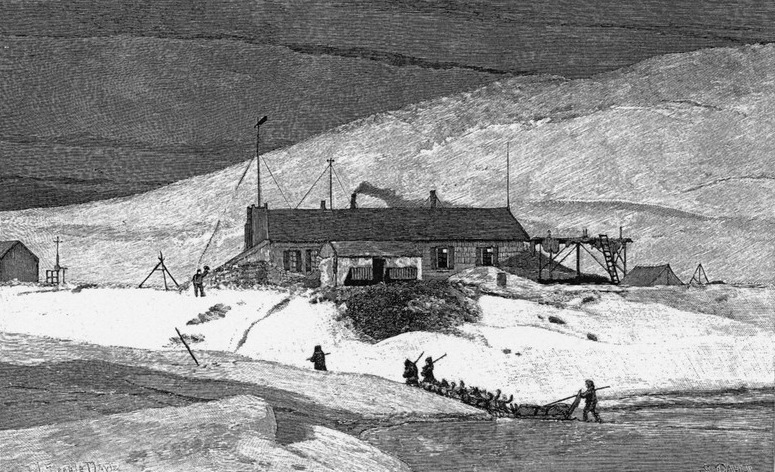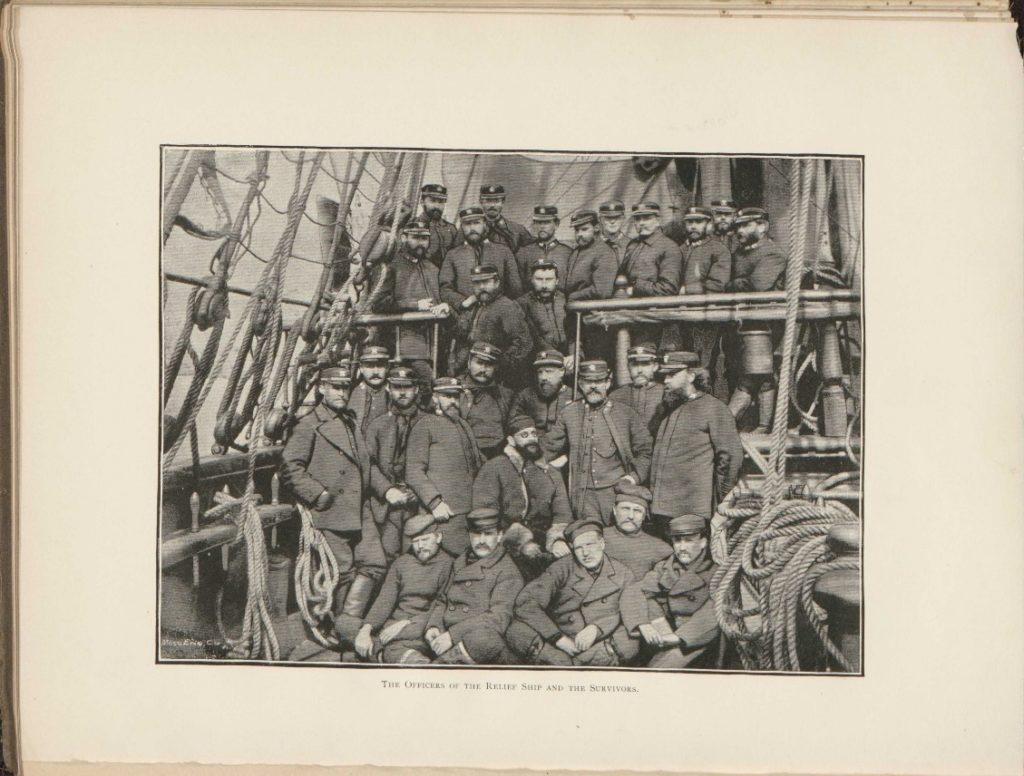May 18, 2020
Whaleboats for the Greely Relief Expedition
A rescue mission to the Arctic is supplied with two small HMCo. built steam powered whaleboats

For those not familiar with the story of the Greely Expedition, we highly recommend this PBS documentary on the subject. You might also want to check out this documentary to get a sense of the journey from Fort Conger to Point Sabine as a group of modern adventurers and one Greely descendant trace their steps. You might also enjoy this Smithsonian piece about a few Greely related artifacts in their collection. But for a short and simplified version of the story and the HMCo. connection, read on!

A Research Expedition Turned Tragedy
In the summer of 1881, the U.S. government sent a group of 25 men from the U.S. Army Signal Corps led by First Lieutenant Adolphus W. Greely to the Arctic to establish a research station on Lady Franklin Bay, north of Greenland on Nare’s Straight. It was intended to be part of the first "International Polar Year" initiative, first put forth in 1875 by Austro-Hungarian Naval Officer Karl Weyprecht. The plan was for the supply ship PROTEUS to drop these men with enough building materials and food to establish a station (Fort Conger) during the short summer season and then weather the months-long night of an arctic winter. They would take hundreds of readings each day, summer and winter, recording atmospheric conditions, magnetic data, tidal readings, and other scientific observations while also exploring by dogsled and collecting natural history specimens. An exposed coal seam nearby helped with the fuel supply and they supplemented their rations by hunting and fishing. Quietly, they planned to send a smaller team north, to try to best the British record for northernmost point reached by western explorers. The following summer when the ice had cleared, the supply ship would return to bring communications from home and more material and provisions for the men to weather a second winter. The second summer the supply ship would return again to bring them relief. That, at least, was the plan.

It turned out that the summer the Greely party was dropped in Lady Franklin Bay was an unusually warm one, and the passage would not open up again during the following two summers. Relief attempts failed in 1882 and 1883 - the 1883 attempt ending when one of the relief ships was crushed and sank in pack ice. The expedition planners had considered there could be a chance the relief ships would not be able to reach Fort Conger, in which case the supply ships were supposed to drop a cache of supplies at the furthest north point the ice would allow them to travel. In the contingency planning, this would likely somewhere on Cape Sabine, some 250 miles south of Fort Conger in Lady Franklin Bay.
For their part, if the Greely party saw no sign of supply ships by the summer of 1883, they were to begin the arduous journey south over ice, open water and land in their small steam lifeboats towards the rendezvous point on Cape Sabine. Greely and his diminishing party made the perilous journey south to Cape Sabine and arrived there in October 1883. It was too late in the season to attempt to go any further south in their small lifeboats so they built a tiny shelter and dug in for a third winter. By the time a third and final relief mission finally made it to them at Cape Sabine in June of 1884, only seven men (including Greely) were still alive. The rest had succumbed to starvation, hypothermia, drowning or exposure, and one had been shot for repeatedly stealing food. One of the men died on the voyage back to St. John's, Newfoundland, leaving six survivors of the original 25 person party. But incredibly they also managed to bring all of their observational data with them back to Point Sabine, and this too was retrieved by the rescue vessels.

While the original expedition had departed to little fanfare, the repeated failure of the resupply and relief missions was brought to the public’s attention largely through the efforts of Adolphus Greely’s wife Henrietta, who wrote to every newspaper and publication she could to try to get the word out about the abandonment of enlisted men - many of whom were Civil War veterans - in the Arctic. This sparked great public debate. Some of the questions were quite logical while others might surprise us today: should the U.S. government care about weather patterns above the arctic? Why was this mission the purview of the U.S. Army rather than the Navy? Should the Federal government be funding scientific research at all?

What does this have to do with HMCo.?

In the end, it was a Navy expedition that succeeded in rescuing the survivors. This was a favorable publicity opportunity for the Navy after the Army's previously failed attempts. Two of the four vessels in the final rescue party were the USS THETIS and USS BEAR, and each carried a steam driven whaleboat (tender/lifeboat) built by HMCo. THETIS (HMCo. #108) and (charmingly,) CUB (HMCo. #109) were designed with some thought towards arctic use, with two extra "keels" to serve as runners and a swinging arm on the propeller shaft to allow the propeller to be drawn up into the boat, protecting the hulls and props if the vessel had to be dragged along the ice. HMCo. had previously built the spar torpedo boat LIGHTNING (HMCo. #20) in 1876, but the major U.S. Navy torpedo boat contracts were yet to come for HMCo. How was it that these two fairly small contracts from the U.S. Navy would have ended up on JBH's desk?
In 1884, HMCo.'s relationship with the U.S. Navy was warming, with several advocates for their work in Naval Officers David Dixon Porter, George Albert Converse and Benjamin Franklin Isherwood. J.B.H. took advantage of the close proximity of the U.S. Naval Torpedo Station in Newport to showcase the capability of HMCo. built engines and boats on the water and off - for example, loaning them his personal steamer LEILA (HMCo. #40) purely for promotional purposes, which lead to the publication a very favorable report on her performance by the Navy in 1881. Additionally, HMCo. had supplied similarly sized steam launches for U.S. Fish Commission contracts (established in 1871, it would become the U.S. Bureau of Fisheries in 1903) and for the U.S. Coast Survey. One small U.S.F.C. launch in 1880 lead to three more in 1882, and six cutters were built for the U.S.C.S. by the time the Greely contracts arrived in 1884. Both institutions were often partially staffed by US Naval officers, and so favored builders and designers of vessels for the U.S.C.S. and U.S.F.C. might have had some small advantage in securing US Navy contracts during this period. (In fact, HMCo. #114 and #131 would be built for the U.S.C.S. from the original Greely whaleboat model)
Somewhat amusingly, in the final report from Commander Winfield S. Schley about the Greely Relief mission, the HMCo. whaleboats received politely favorable marks but their steam plants did not, being too complex to maintain in such extreme environs: "... The Herreshoff steam cutters [#108p Thetis and #109p Cub] supplied to the Thetis and Bear proved most excellent boats in a sea-way. For the uses of the general cruisers of the Navy they are very desirable additions, but for service in the Arctic, which is exceptionally severe and where the exigencies of hard usage and neglect are rather the rule, I must say the Herreshoff type did not meet my expectation. Simpler design of engine and boiler seems needed in that region, or at least a type which occasional neglect would injure to less extent than the Herreshoff. In both these cutters the coils burst; the spring safety-valves failed to work at a critical moment and nearly involved the loss of both cutters; the exterior condenser was unsuited and vulnerable when hauled on to the ice. On the other hand, their advantages over the ordinary launch used in the service were: the rapidity with which steam could be got up, their economy in the use of coal and water, and their speed. The White steam cutter of the Alert was an exceedingly handy boat. She was neither so fast nor so good a seaboat as the Herreshoff cutter. The engine is simple and easily kept in working condition. ..." (see p. 67 - 68.) Fortunately for HMCo., this poor review did not seem to impact their future chances at the significant torpedo boat contracts that would soon follow. It is notable to us today that they might have had some small part in the rescue mission, particularly as scientists are utilizing data gathered during these early Polar expeditions to help inform current models in predicting climate change. But launch a thousand arctic exploration and rescue vessel contracts... it did not.


